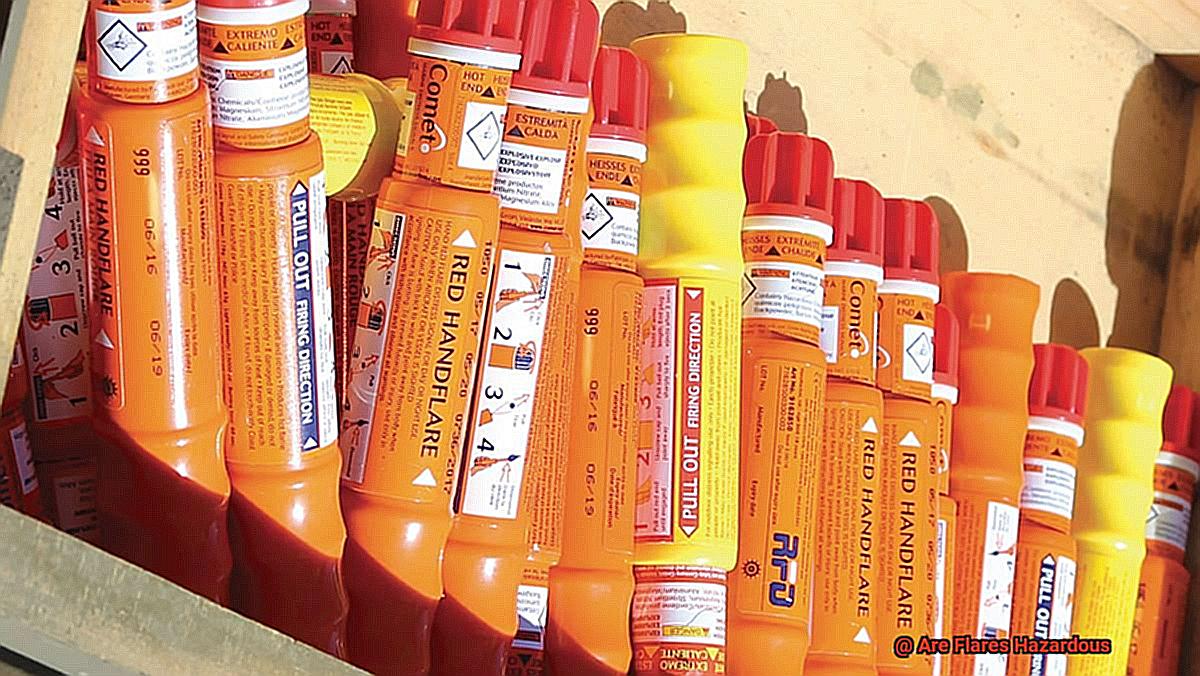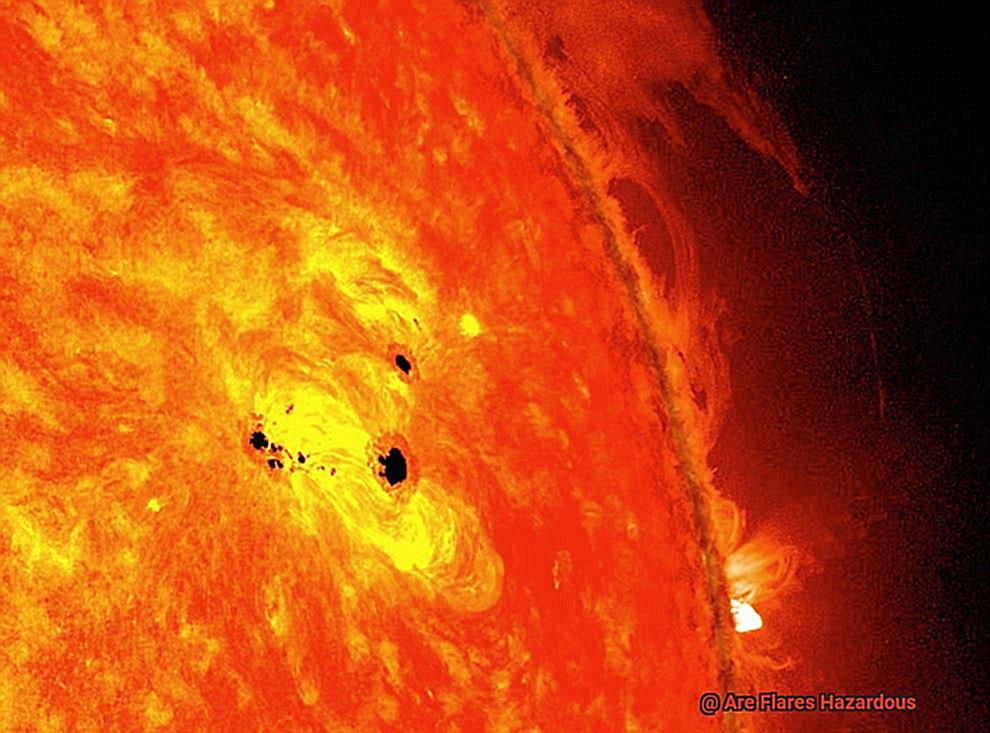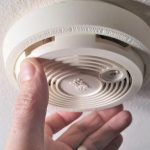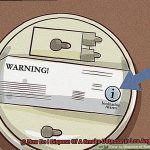You know, those flashy pyrotechnics that light up the night sky like a million stars exploding at once?
Sure, they may seem like harmless party favors or cool emergency signals, but have you ever wondered if they can actually be hazardous? Spoiler alert: they definitely can be.
From starting raging fires to causing serious injuries, flares are not to be taken lightly. But don’t worry, we’ve got you covered with all the need-to-know info on their potential dangers and how to stay safe while enjoying their fiery spectacle.
So, buckle up and get ready for a wild ride through the world of flares.
Are Flares Hazardous?
Contents
- 1 Are Flares Hazardous?
- 2 Harmful Chemicals in Flares
- 3 Dangers of Inhalation and Eye Contact with Flare Smoke
- 4 Impact on the Environment from Improper Flare Disposal
- 5 Safe Handling and Disposal of Expired or Damaged Flares
- 6 Regulations and Guidelines for Properly Disposing Flares
- 7 Alternatives to Traditional Flares for Signaling Emergencies
- 8 Conclusion
Flares are a common sight in emergency situations, as they are used to signal for help or to mark locations. However, few people realize the potential hazards that these seemingly harmless signaling devices pose. Flares contain highly reactive chemicals that can cause explosions and produce intense heat and bright light. In this blog post, we will explore the dangers of flares and provide guidelines for their proper disposal.

The Explosive Nature of Flares
The main ingredient in flares is potassium perchlorate, a highly reactive chemical that can cause explosions when mixed with certain materials. When ignited, flares produce intense heat and bright light, making them potentially dangerous if not handled properly. In fact, flares are classified as hazardous materials and their disposal is regulated by government agencies to ensure proper handling and minimize environmental impact.
The Harmful Effects of Flare Smoke
Aside from the immediate danger of explosions, the smoke produced by flares can also be harmful. It contains chemicals such as zinc, copper, and sulfur that can irritate the eyes, nose, and throat. Inhaling large quantities of flare smoke can lead to respiratory issues and other health problems.
Dangers to Eyesight from Flare Light
The bright light emitted by flares can also be dangerous to the eyes. Looking directly at a lit flare or being in close proximity to one can cause temporary blindness or permanent damage to vision. It is important to avoid looking directly at a flare and to use protective eyewear when handling them.
Environmental Impact of Improper Flare Disposal
Improper disposal of flares can have negative impacts on the environment. When thrown into bodies of water, they can contaminate marine life and disrupt ecosystems. On land, they can release toxic chemicals into the soil and water sources, leading to pollution and harm to wildlife.
Handling Expired or Damaged Flares
Expired or damaged flares cannot be disposed of in regular trash bins. They still contain hazardous materials and can pose a threat even when not lit. Some countries have designated collection points or drop-off locations for the proper disposal of flares. It is important to follow these guidelines and not attempt to dispose of flares on your own.
Harmful Chemicals in Flares
Flares, those bright and colorful emergency signaling devices, may seem harmless at first glance. But what many don’t realize is the hazardous chemicals lurking inside them and the potential harm they can cause. As an expert on harmful chemicals in flares, I’m here to shed light on this important topic and provide valuable information for their safe handling and disposal.
So what exactly makes flares dangerous? Let’s start with the chemicals they contain. Potassium perchlorate, sulfur, and charcoal are just a few of the harmful substances found in flares. These chemicals can cause skin irritation, respiratory issues, and eye irritation if not handled properly.
But the danger doesn’t stop there. When ignited, flares release toxic gases such as carbon monoxide and sulfur dioxide. Inhaling these gases can lead to headaches, dizziness, and even loss of consciousness. And for those using flares on boats, the smoke produced can also pose a threat to marine life and water sources.
Improper disposal of flares can also have serious consequences. The chemicals in flares can take years to break down and can cause long-lasting harm to the environment. The packaging of flares is also a concern as it is often made of plastic, which can take hundreds of years to decompose and contribute to plastic pollution.
So how can we handle flares safely? First and foremost, always follow the manufacturer’s instructions for use. This includes wearing protective gear such as gloves and goggles when handling flares. After use, it’s important to dispose of them properly. Many local fire departments or hazardous waste facilities offer drop-off locations for flares. It’s also crucial to never throw them in the trash or overboard into bodies of water.
Dangers of Inhalation and Eye Contact with Flare Smoke
Picture this scenario: you’re out on a boat with your friends, enjoying a beautiful day on the water. Suddenly, your engine fails and you’re stranded. You reach for your flares to signal for help, but do you know the potential risks associated with these seemingly harmless emergency devices?
As an expert on the dangers of inhalation and eye contact with flare smoke, I am here to share important insights and information on how to properly dispose of flares to protect yourself and others.
What’s in Flare Smoke?
When ignited, flares produce smoke that contains toxic chemicals such as sulfur, potassium nitrate, and aluminum particles. The chemical composition of flare smoke can vary depending on the type of flare used, but all types pose some level of danger to human health.
The Dangers of Inhalation
Inhaling flare smoke can cause respiratory irritation, coughing, and difficulty breathing. Prolonged exposure can lead to more serious health issues such as bronchitis and lung damage. It is crucial to note that even after the flare has burned out, the residual smoke can still be hazardous if inhaled.
Protective Gear is a Must
To minimize the risk of inhaling flare smoke, it is important to wear proper protective gear when handling flares. A respirator and safety goggles should always be worn to prevent respiratory and eye irritation. Ingestion of flare smoke should also be avoided at all costs, as it can cause severe internal damage.
Eye Contact Can Be Harmful Too
Not only can flare smoke irritate the respiratory system, but it can also irritate the eyes. Eye contact with flare smoke can cause redness, irritation, and even temporary blindness. Wind direction and speed can also affect the spread of flare smoke, making it important to use flares in well-ventilated areas.
Proper Disposal is Key
After using flares, it is crucial to properly dispose of them to prevent any potential harm to yourself or others. Flares should never be burned in enclosed spaces or thrown in the trash. Contact your local hazardous waste disposal facility for proper disposal methods.
The Bottom Line
Flare smoke may seem harmless, but it poses serious risks to human health. It is important to handle flares with caution, wear protective gear, and use them in well-ventilated areas. Proper disposal is also crucial in minimizing the potential dangers of flare smoke.
Impact on the Environment from Improper Flare Disposal
Flares are an essential safety tool for boaters and outdoor enthusiasts, providing a signal for help in emergency situations. However, what many people don’t realize is that improper disposal of flares can have severe consequences for the environment. As an expert on this topic, I am here to shed light on the harmful effects of incorrect flare disposal and how we can take responsibility to protect our planet.
Pollution is one of the most significant consequences of improper flare disposal. When flares are lit, they release toxic chemicals such as sulfur dioxide, carbon monoxide, and particulate matter into the air. These pollutants can contribute to air pollution and have harmful effects on both human health and ecosystems. In fact, according to the Environmental Protection Agency (EPA), exposure to these chemicals can cause respiratory problems, cardiovascular disease, and even premature death.
But it doesn’t stop there. Improper disposal of flares can also lead to water pollution. When flares are thrown into bodies of water, they can contaminate the water with toxic chemicals and heavy metals. This can have a devastating impact on marine life, disrupting the food chain and potentially causing harm to human health if consumed.
The damage caused by improper flare disposal is not limited to just air and water pollution. Flares can also cause physical damage to the environment. When left on land, they can start fires that can destroy vegetation and wildlife habitats. The burning of flares also releases carbon dioxide into the atmosphere, contributing to climate change.
Moreover, the impact of improper flare disposal extends beyond the immediate area. Wind and water currents can carry these pollutants to other ecosystems, causing harm in different areas. It’s a domino effect that can have far-reaching consequences.
So what can we do to minimize the negative impact of flares on the environment? The first step is proper disposal. It is crucial to follow local guidelines and regulations for flare disposal or use designated disposal sites specifically for flares. It may seem like a small action, but it can make a big difference in protecting our environment.
Furthermore, as individuals who use flares, we must take responsibility for their proper disposal. This includes being aware of any restrictions on flare usage in our area and properly storing and disposing of unused flares. It’s essential to educate ourselves and others on the potential harm that flares can cause and make conscious decisions to protect our planet.
Safe Handling and Disposal of Expired or Damaged Flares
That’s right, those small, seemingly harmless signaling devices can actually pose a significant threat if not handled and disposed of properly. This is due to their chemical composition and potential for accidental ignition.
So what should you do with expired or damaged flares? First and foremost, do not use them or throw them in the regular trash. Even though they may no longer be effective, expired flares can still contain active chemicals that could be harmful to the environment. And damaged flares that have been exposed to extreme temperatures or moisture can be even more unstable and dangerous.
The safest course of action is to contact your local fire department or hazardous waste disposal facility for guidance on proper disposal methods. These professionals have the knowledge and resources to handle hazardous materials safely and responsibly.
If contacting a disposal facility is not possible, carefully place the flare in a plastic bag and seal it before disposing of it in a designated hazardous waste bin. Do not attempt to burn or crush the flare, as this can release harmful chemicals into the air.
It is also important to always read the manufacturer’s instructions for safe handling and disposal of flares before use. Flares should be stored in a cool, dry place away from any potential sources of ignition.
Remember, it is better to err on the side of caution when it comes to expired flares. If you are unsure about the expiration date of your flares, it is best to dispose of them properly rather than risk using expired ones.
Regulations and Guidelines for Properly Disposing Flares
Properly disposing of flares is not only important for the environment, but it is also crucial for the safety of those handling them. As an expert on this topic, I have seen firsthand the consequences of improper flare disposal and the impact it can have on our surroundings and our health.
First and foremost, it is essential to understand that flares are considered hazardous waste. In the United States, they are classified as “Class I” hazardous waste by the Environmental Protection Agency (EPA). This means that they pose a significant risk to both human health and the environment.
To ensure the safe handling and disposal of flares, the Resource Conservation and Recovery Act (RCRA) regulates their management in the US. This includes proper identification, labeling, storage, and disposal according to federal, state, and local regulations. It is crucial for anyone who generates hazardous waste to follow these guidelines to avoid fines and penalties.
The US Coast Guard also has specific regulations for flare disposal. They require that expired or damaged flares be disposed of in accordance with local laws and regulations. This means that it is important to check with your state’s environmental agency for any specific guidelines.
While each state may have its own regulations, there are some general guidelines that should be followed when disposing of flares. First and foremost, do not throw them in the trash or flush them down the toilet. They should also not be burned or buried in landfills. The preferred method for disposal is through a licensed hazardous waste management company or a reputable marine supply store that offers flare disposal services.
If no disposal options are available, it is recommended to keep expired or damaged flares in a secure location until a proper disposal method can be found. It is crucial to never attempt to dismantle or disassemble a flare yourself as they are highly explosive.
Alternatives to Traditional Flares for Signaling Emergencies
Join me as we explore the best alternatives to traditional flares for signaling emergencies. As an expert on emergency signaling, I have seen the dangers of flares and understand the importance of finding safer and more environmentally friendly options for calling for help.
Flares have been a go-to for signaling emergencies for many years, but they also come with significant risks. The pyrotechnic nature of flares makes them hazardous to handle and dispose of, not to mention the damage they can cause to our environment. It’s time to say goodbye to traditional flares and hello to safer and more effective alternatives.
One alternative is the use of LED flares. These modern devices provide a bright and long-lasting light source without the risk of fire or explosion. They are also reusable, making them a cost-effective option for long-term signaling needs.
Another option is the use of signal mirrors. These handy tools use sunlight to reflect a beam of light and can be seen from long distances. They are lightweight and compact, making them easy to carry in emergency kits or on outdoor excursions.
For those looking for an audible option, whistles and air horns are excellent alternatives for signaling in emergency situations. With their loud and distinct sound, they can be heard over long distances and are useful in dense or wooded areas where visual signals may not be effective.
But perhaps one of the most advanced alternatives available now is electronic distress beacons. These devices use GPS technology to pinpoint the exact location of an emergency and send out distress signals to nearby rescue teams. They are a reliable option for those needing immediate assistance in remote areas.
Not only do these alternatives reduce the risk of hazardous incidents, but they are also reusable and do not harm the environment. Properly disposing of traditional flares can be a challenge, but with these options, you won’t have to worry about polluting our surroundings.
Conclusion
In conclusion, it is important to recognize that flares, while they may seem harmless at first glance, can actually pose significant hazards. Whether used as party favors or emergency signals, the chemicals and smoke produced by flares can lead to fires and serious injuries. It is crucial to handle and dispose of flares properly, following guidelines set by government agencies and local regulations.
But don’t worry, there are safer alternatives available. LED flares, signal mirrors, whistles and air horns, and electronic distress beacons are all effective options for signaling in emergency situations without the risk of explosions or pollution.
As we continue to delve into the world of flares and their potential dangers, let us remember to prioritize safety and responsibility in our handling and disposal of these pyrotechnic devices. So next time you’re out on a boat or enjoying an outdoor adventure, think twice before reaching for those traditional flares.





